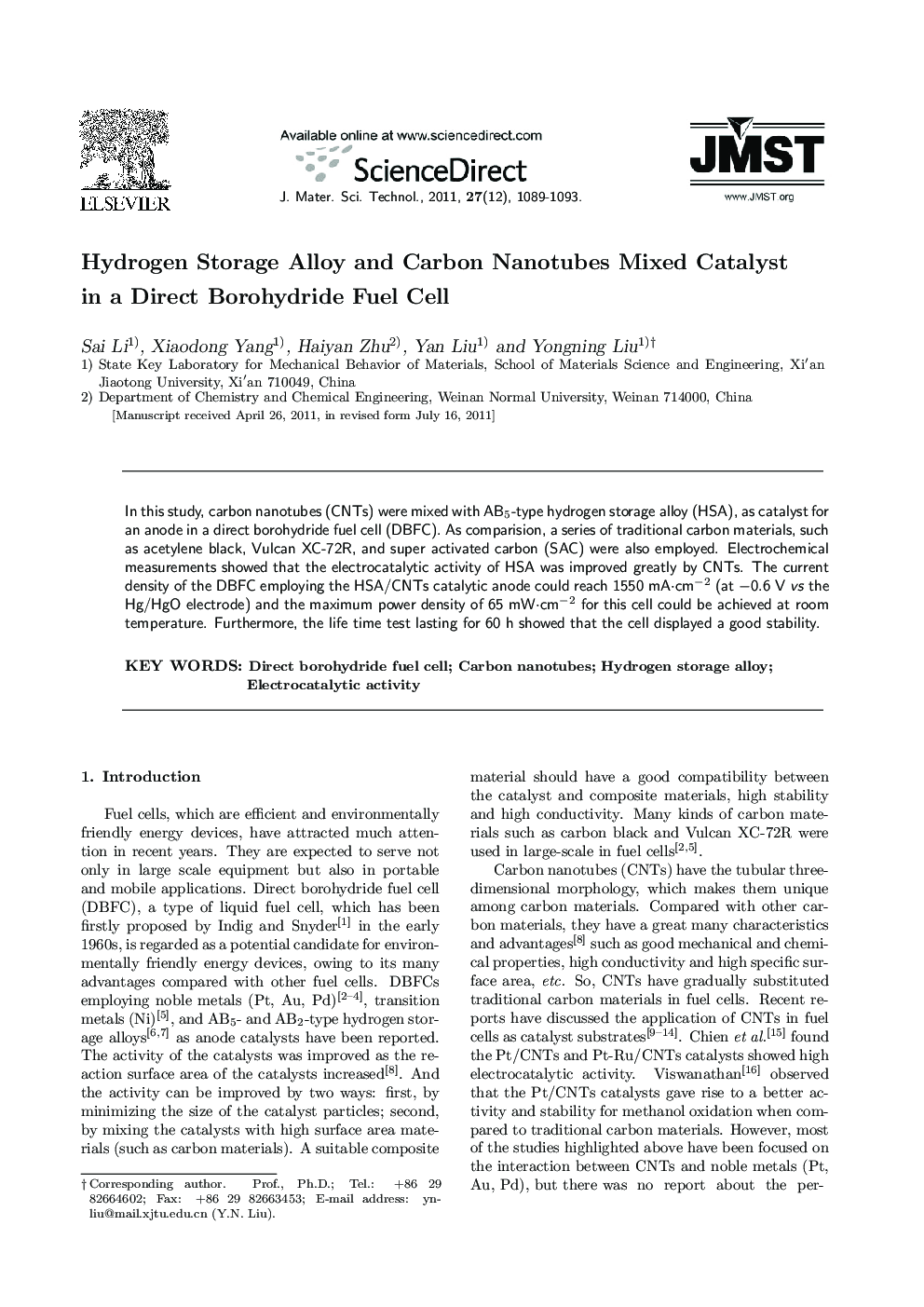| Article ID | Journal | Published Year | Pages | File Type |
|---|---|---|---|---|
| 1557057 | Journal of Materials Science & Technology | 2011 | 5 Pages |
Abstract
In this study, carbon nanotubes (CNTs) were mixed with AB5-type hydrogen storage alloy (HSA), as catalyst for an anode in a direct borohydride fuel cell (DBFC). As comparision, a series of traditional carbon materials, such as acetylene black, Vulcan XC-72R, and super activated carbon (SAC) were also employed. Electrochemical measurements showed that the electrocatalytic activity of HSA was improved greatly by CNTs. The currentdensity of the DBFC employing the HSA/CNTs catalytic anode could reach 1550 mA-cm−2 (at −0.6 V vs the Hg/HgO electrode) and the maximum power density of 65 mW·cm−2 for this cell could be achieved at room temperature. Furthermore, the life time test lasting for 60 h showed that the cell displayed a good stability.
Related Topics
Physical Sciences and Engineering
Materials Science
Materials Chemistry
